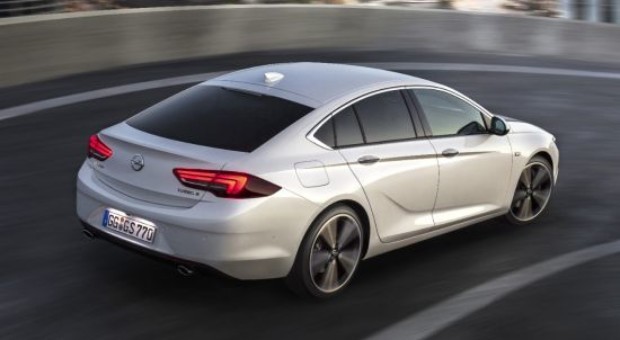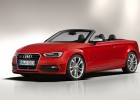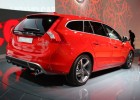
Prices for Opel Insignia Grand Sport start at €25,940
As of February 17, the new Opel flagship is available to order as a Grand Sport sedan from €25,940 (all prices RRP incl. VAT in Germany) and as a Sports Tourer station wagon from €26,940. And the new generation Insignia is proving to be irresistible: the newcomer not only stands out with its elegantly sporty silhouette featuring exemplary aerodynamics (CD of just 0.26 for the coupé-like five-door) but is also full of technological innovations. All in all, the new Insignia impresses with improved agility and spaciousness along with excellent value for money, making it a strong challenger even for premium brand models. The new Insignia starts as standard with driver assistance systems such as forward collision alert with pedestrian recognition, automatic emergency braking, lane departure warning, lane keep assist with automatic steering correction and following distance indication. The significant increase in safety is rounded off the by the active hood for improved pedestrian protection. Elsewhere, even the basic version comes with a touchscreen.
The second generation Insignia is based on an all-new architecture. It weighs up to 175 kilograms less than the outgoing model as a Grand Sport limousine, and up to 200 kg less as a spacious Sports Tourer station wagon. This substantial mass reduction and the new, extremely precise steering system are responsible for the improved driving dynamics. Furthermore, the all-new Opel flagship debuts with a wide range of highly efficient engines and friction-optimized transmissions designed to provide better efficiency and lower fuel costs. Fuel consumption of the expected volume engines available for the Grand Sport (gasoline: 1.5-liter Turbo; diesel: 1.6 CDTI) is down by three to ten percent compared with the equivalent outgoing models, according to the Worldwide Harmonized Light-Duty Vehicles Test Procedure (WLTP).
Opel already announced in December 2015 that the company will provide consumption figures based on the WLTP driving cycle for future models. The WLTP driving cycle will become legally binding as of the fall of 2017 and, compared with the currently applicable NEDC, is closer aligned to real driving behavior. Starting with the new Astra, Opel already began providing CO2 and fuel consumption data gathered in accordance with WLTP driving cycle in addition to the official NEDC data as of June 2016. This gives Opel customers a more realistic estimate of the daily consumption of their vehicle. Tests conducted by renowned publications such as Italian magazine Quattroruote already show that the Opel data collected in accordance with the WLTP driving cycle comes very close to real-life consumption.
New gasoline and refined diesel engines available at start of sales
The engine portfolio of the new Opel Insignia Grand Sport starts with a newly designed extremely efficient gasoline unit, the 1.5-liter turbo available in two output levels. The entry-level engine offers 103 kW/140 hp (NEDC fuel consumption Grand Sport: urban 7.3 l/100 km, extra-urban 4.7 l/100 km, combined 5.7 l/100 km; 129 g/km CO2) and impresses with powerful torque of 250 Nm between 2,000 and 4,100 rpm. The more powerful 121 kW/165 hp version (NEDC fuel consumption Grand Sport: urban 7.0 l/100 km, extra-urban 4.9 l/100 km, combined 5.7 l/100 km; 130 g/km CO2) has everything that it takes to be the bestselling gasoline engine available for the Insignia family. Compared to the already very efficient 1.6-liter Turbo (125 kW/170 hp) used in the outgoing model, the new engine reduces consumption in accordance with the WLTP driving cycle on average by around another three percent. The 1.5-liter all-aluminum, turbo-charged direct injection unit has the largest displacement of all the ultra-modern three and four-cylinder members of Opel’s small gasoline engine family. The new 1.5-liter high-tech four-cylinder also impresses with sharp throttle response and ample torque in every situation – two typical features of these units.
A further highlight is the top-of-the-range gasoline engine for the new Insignia. The 2.0-liter turbo delivers 191 kW/260 hp and maximum torque of 400 Nm between 3,000 and 4,000 rpm (NEDC fuel consumption Grand Sport: urban 11.5 l/100 km, extra-urban 7.0 l/100 km, combined 8.6 l/100 km; 197 g/km CO2). The 2.0-liter, four-cylinder unit comes in combination with the completely new eight-speed automatic transmission, which shifts smoothly, and a highly sophisticated all-wheel drive system with torque vectoring – a unique feature in the midsize segment. On this high-tech all-wheel drive system, two multi-plate clutches replace a conventional rear axle differential and can accelerate the wheels individually in a split-second depending on the driving situation.
The propulsion offering is rounded off by the new six-speed manual transmission for the popular 1.6-liter diesel engines with outputs of 81 kW/110 hp (NEDC fuel consumption Grand Sport: urban 4.6 l/100 km, extra-urban 3.6 l/100 km, combined 4.0 l/100 km; 105 g/km CO2) and 100 kW/136 hp (NEDC fuel consumption Grand Sport: urban 5.1 l/100 km, extra-urban 3.9 l/100 km, combined 4.3 l/100 km; 114 g/km CO2). This new combination of friction-optimized manual transmission and refined 1.6 CDTI with 81 kW/110 hp results in average fuel savings in the WLTP driving cycle of ten percent compared to the outgoing model.
In addition, Opel will offer the refined 2.0-liter diesel with 125 kW/170 hp (NEDC fuel consumption Grand Sport: urban 6.7 l/100 km, extra-urban 4.3 l/100 km, combined 5.2 l/100 km; 136 g/km CO2).
The full price list for the new Insignia will be available when the order books open on February 17. In addition, Opel will establish the consumption data of all Insignia engines on the basis of the future valid WLTP driving cycle test cycle and publish it during the course of the first half of the year on the customer website opel.com to ensure the greatest possible transparency.




















